Any form of competition obviously requires a certain type of ambition, perseverance and fortitude in order to succeed, especially in one that’s hotly-contested. But while less determined souls would fall off the wagon eventually, you still need a touch of wit and cunning to emerge above the others and win.
The same is absolutely true with fuel economy challenges, particularly over long distances and especially with a time element thrown in. What usually starts as a mix of intrigue and skepticism on whether the car can actually make it to the destination without running out of fuel descends – as Anthony found out during the Mercedes-Benz E 300 Bluetec Hybrid drive – into a fit of madness as everyone tries to one-up the other.
It’s the same formula all the time – earlier in the year, Bermaz invited us to participate in the Mazda SkyActiv Clean Diesel Challenge to see if the diesel-powered Mazda 2 would be able to make the 1,041 km journey from Bangkok to the Thai-Malaysian border on a single tank.
The local distributor has long been interested in bringing diesel models in – it already assembles diesel CX-5s for the Thai market, and had been testing oil-burning Mazda 2s and 6s on local fuel (of course, it recently confirmed that the cars are coming). The whole thing piqued our interest, to say the least, but here in the real world, does the technology actually work? Well, it does, but as usual we don’t always play nice…
The challenge itself is relatively straightforward – the drive, conducted over the course of two days, kicks off at the Wearnes Mazda showroom in Bangkok at 7:00 am and traces a 658 km route to the overnight rest stop at Surat Thani, before it picks up again on a 383 km journey to the Malaysian border town of Changlun. As mentioned, the total distance amounts to 1,041 km.
The route is split into three time control points per day (including the end points of each day), and there are strict time limits at every stop – a penalty of 0.3 litres per 100 km is exacted for every five minutes late. As we soon find out, this adds a layer of complication to the mix, requiring us to balance fuel economy with pace. Still, we assume it would be an easy one, with plenty of leeway…
All cars are strictly regulated – the bonnet and fuel filler cap are sealed, and the tyre valves and even the door mirrors have tamper-proof tape applied to detect errant cheaters. Even the climate controls are standardised, enclosed in a clear case and taped up.
There are five Malaysian teams competing, all battling it out in Mazda 2 diesel hatchbacks. The Thai contingent is several times larger, and are split into three classes – Mazda 2 Hatch, Mazda 2 Sedan and Mazda CX-5.
The #19 car we are provided with is a mid-spec Mazda 2 Hatch XD Sports High which, despite the posh name, is rather basic in spec. Those who complain about the Malaysian-spec car not having LED headlights should have a look at this – aside from having standard halogen reflectors, it also has tiny 15-inch alloy wheels (an inch down from our 16s) and ditches the body colour grille trim and front fog lights.
Inside it feels yet more Spartan – keyless entry and push-button start is still fitted, but there’s no head-up display or even the MZD Connect infotainment system, just a cheap-looking radio where the seven-inch touchscreen usually sits. Leather upholstery is also switched out for fabric, while the usually leather-covered dashboard trim panels are now bare textured black plastic.
All but one of the cars provided to the Malaysian teams are specced in the same trim level. The only other team gets access to the range-topping XD Sports High Plus model (car #16) with all the bells and whistles, earning jealous looks from the other competitors.
Still, all cars are at least fitted with the same drivetrain – the wonder engine touted here, tucked under the lengthy bonnet, is the 1.5 litre “Clean Diesel” SkyActiv-D four-cylinder. The mill’s myriad of innovations starts with a compression ratio that’s much lower than on other oil burners out there, at 14:8.1.
Mazda claims this reduces the amount of nitrogen oxides (NOx) and soot emitted, allowing the engine to meet stringent Euro 6 emissions standards – crucially, without resorting to expensive aftertreatments like AdBlue urea injection. It also enables the use of lighter, more efficient components, due to the lower internal stresses involved.
There are other improvements on the larger 2.2 litre mill in the Mazda 3, 6 and CX-5, too, including the use of a variable geometry turbocharger (as opposed to a twin-scroll turbine), a water-cooled intercooler integrated into the intake manifold to quicken acceleration response and reduce resistance, as well as an extended homogenous lean burn range for improved fuel economy, emissions and performance.
Changes have also been made in terms of cooling – these include cooling water control valves (CCV) and water jacket spacers for better combustion efficiency and reduced mechanical resistance. Also fitted are high dispersion solenoid injectors and stepped egg-shaped pistons, which limit contact between the flame and chamber wall, reducing cooling loss.
The result is 105 PS at 4,000 rpm and 250 Nm from 1,500 to 2,500 rpm, sent through the front wheels through a six-speed SkyActiv-Drive automatic transmission. Mazda Thailand does not quote an official fuel consumption figure, but Japanese-spec cars deliver a claimed JC08-rated 3.8 litres per 100 km. Combined with the 44 litre fuel tank, that means a range of 1,158 km, theoretically more than enough to make the journey.
In the morning, we’re ferried to the showroom, provided breakfast and given a short refresher on SkyActiv-D technology as well as the finer points of the competition. Before long, it’s go time, and all of us cram into our cars (I man the first stint, and alternate with co-driver Gerard Lye at each stop) and wait to start the engines at the last minute, before crawling out onto what we imagined would be a smooth and blissful journey.
As it turns out, the conditions are a fair bit tougher than we thought – Monday morning rush hour is just starting to kick in, and the main road is practically clogged with traffic. Worse still, the main road out of the showroom splits into a bewildering myriad of turnoffs – signposted in illegible Thai, no less – and although we do have a GPS navigation system installed, it doesn’t tell us exactly which lane we’re supposed to stick to.
The lead Malaysian team in car #16 charges through first, and in a fit of brilliance decides to hang on for dear life behind the Thai cars, escape the mess and carry on through with the challenge in earnest; we did not know it then, but the team’s fleetness pretty much seals the fate of the competition before it even starts.
It also ensures that the rest of us are stranded without anyone to follow, so we brave into the fast-moving flow on our own. Using the walkie-talkies provided to us, we communicate constantly with each other to try to figure out the right route to take out of the current predicament.
And predictably, that leads half of us – yours truly included – in the wrong direction, and off the main highway leading out of Bangkok. This means we have to find a U-turn, head in the other direction and then make another U-turn, before taking the proper route to the first checkpoint in Pranburi some 222 km away.
Soon after, I make the dubious error of misreading the sat-nav’s display and take another wrong turn, although this time the recovery only takes a few minutes.
By this time, the calamities have settled down, and we are travelling at a steady 70-80 km/h, consuming fuel at around the 3.0 litres per 100 km mark; both Gerard and I feel that we are going to make it through the whole ordeal unscathed. It takes us nearly an hour before we realise just how wrong that assumption was.
Midway through, I check the cut-off time for Pranburi, and to our horror we discover that, due to the lengthy delays at the start, we are severely off the pace, and that we risk a heavy bout of penalties or even outright disqualification. Finally, I decide to throw caution completely to the wind and gun it.
It’s here, of course, where the oil-burner’s surprising turn of pace – which we wouldn’t have found otherwise – is revealed. There is a little turbo lag from idle, but the explosive punch comes in above 2,000 rpm and punts the featherweight 2 right towards the speed limit. It banishes the petrol 2’s slightly asthmatic nature at low down, while losing little of its effervescence.
Unlike petrol models, the diesel variant doesn’t come with a more responsive Sport mode for the automatic transmission, but such is the torque from the diesel that it makes the slightly lethargic ‘box a non-issue here.
Bombing along the highway at a downright blistering 120 km/h, we cringe as we start to see the fuel consumption figure creep up at an alarming rate. But we are making good progress in terms of pace, and eventually we spot the rest of the convoy as the checkpoint grows nearer and nearer.
Before long, we catch up with two other Malaysian teams at the final traffic light, and pass them before we enter the checkpoint. We are actually second to the stop, behind #16 – but by then the damage was done. Everyone from second place down (that’s us included) are given penalties, and the fifth and last team is disqualified at the first stop itself.
Our previously carefully-manicured fuel consumption figure is in tatters too – the number has grown to a worrying 3.7 litres per 100 km. That’s the highest figure among all the Malaysian teams, and we still had a 0.3 litre per 100 km penalty hanging over our heads; looking back, however, the result could have been much, much worse.
Thereafter, the day goes on much more smoothly – Gerard does a fantastic job keeping to the tight schedule of the next checkpoint, sailing into the lunch stop at the Ploensamut Restaurant just in the nick of time to avoid yet another costly penalty.
Throughout the day, the Malaysian teams are neck-and-neck, engaging in the slowest, dullest overtaking race in the world. Meanwhile, most of the Thai teams seem to be having none of this fuel consumption malarkey, and zoom past us; at the other end of the spectrum, we see others appearing to take the competition too seriously, resorting to the extremely risky manoeuvre of tailgating lorries to reduce air resistance.
As the day wears on, the long-distance driving is starting to take its toll on us – the spongy seats felt okay when I drove the petrol 2 for a short while on the track last year, but here the lack of support was clearly evident as hundreds of kilometres of pitted and broken tarmac pass by under us, causing sore bums all around at the end of the day.
Coupled with the loud roar from the tyres at a cruise (admittedly the rough Thai asphalt is partly to blame), it means that the diesel 2 isn’t quite the comfy mile-munching cruiser the relaxed, effortless powertrain makes out to be.
We are also having problems with the tiny digital rev counter, pushed into the corner by the large speedo on the low-spec instrument cluster in our non-HUD cars. It’s not a problem in everyday driving, but when you’re modulating the throttle with your socked foot millimetre by millimetre to achieve the best possible fuel consumption, the lack of a detailed reading is downright infuriating.
Again, we shoot an envious look at car #16 – it’s equipped with a HUD and a small digital speed reading, leaving space for a big, clear analogue rev counter smack in the centre.
Problems notwithstanding, frugal, consistent driving to the stops of Chumphon and Surat Thani sees our fuel consumption drop a little bit, and at the end of the first day, we start getting a little hopeful that maybe, just maybe, we can still salvage something from the first-leg flub.
The next morning, we ride out of Surat Thani towards the first time control stop at Chamai, before heading to Larn Ta Chu for lunch. It goes much like the later stages of the first day – consistency, a light foot and shrewd timing are bringing us the results we are looking for, and we remain cautiously optimistic of our prospects.
But then I take the wheel for the penultimate stint to Sadao and, predictably, I screw up again, driving too slowly on the clear highway stretches on the first half of the leg. This leaves us at the mercy of the traffic that starts to pile up as we reach the town, which conspires with the sudden increase of traffic light stops to put us again at risk of receiving penalties.
As before, this leaves me with no choice but to sacrifice fuel economy for the sake of actually reaching our destination on time, but this time the heavy traffic is proving difficult to get through. I get desperate, and searched frantically for new and “creative” ways to make up for lost time – approaching one red light, I turn left at the junction, make an immediate U-turn, then took another left and sped off.
I am bending my moral compass more than I ever thought I would, and start to feel absolutely guilty, but it works. I swing into the stop at a Tesco parking lot, and Gerard manages to clock us in with nary a minute to spare. To say that this leg was hairy would be selling it way short.
From here on, we form a tight convoy, and work together use the as little fuel as possible as we reach the extremely busy border crossing at Bukit Kayu Hitam. The lengthy queues waste precious more diesel, and we are one of the cheeky ones to turn off the engine at stops to conserve what little we could.
With our particulars checked over and our passports stamped, we set off on the much clearer roads on Malaysian soil. Just as we are settling down into a cruise and look to even out our consumption after the fraught driving earlier, we spot the Shell station at Changlun just 7 km past the border, marking the end of a long and hard-fought 1,041 km journey.
The organisers strip the fuel filler seal, brim the tank and tot up the scores in private – we would only learn the results after making the final 164 km trek to Penang for the prize-giving ceremony.
We are certain we had the highest fuel consumption of the five Malaysian teams – and don’t forget, we still have a 0.3 litre per 100 km penalty to add to the final figure – but we have no idea of the extent of the penalties meted out to the others.
To our surprise (and against all odds) we finish second with combined average fuel consumption of 3.7 litres per 100 km including penalties. Ahead of us sit the #16 pair of Kon Wai Luen and Durrani Sharom – their clean sheet run ends with an outstanding figure of 3.24 litres per 100 km, comfortably clinching the top spot of the podium.
Upon closer inspection, we discover that we did, indeed, possess the highest fuel consumption among the Malaysian teams, at 3.4 litres per 100 km; the rest ranged between 3.24 and 3.25 litres per 100 km. However, the other two teams behind us clocked up penalties of 0.6 litres per 100 km each, pushing their scores to 3.84 and 3.85 litres per 100 km respectively. Close, but no cigar.
Astonishingly, despite driving like outright loons, the Thais manage to bloody beat us – the winning Mazda 2 Hatch team nabs a scarcely believable 3.02 litres per 100 km, while the top Mazda 2 Sedan team’s result is even better, at 3.01 litres per 100 km. As for the CX-5, the most frugal team manages a fuel consumption figure of 4.93 litres per 100 km, a great result for an SUV.
So, there you have it – the little diesel supermini does what it says on the tin, and easily covers the vast ground asked from it (in fact, we could have made it all the way to Penang, apparently). Not only that, the engine proves be be a proper powerhouse, both exceedingly frugal and providing the firecracker punch that’s lacking in the petrol model. If this is what we’re asked to be used to on our roads, then bring it on.
Looking to sell your car? Sell it with Carro.


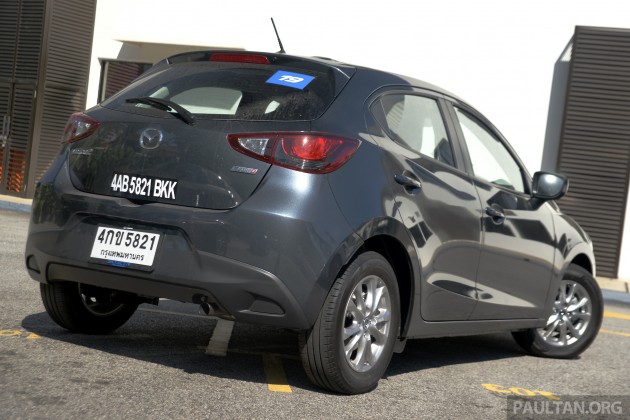


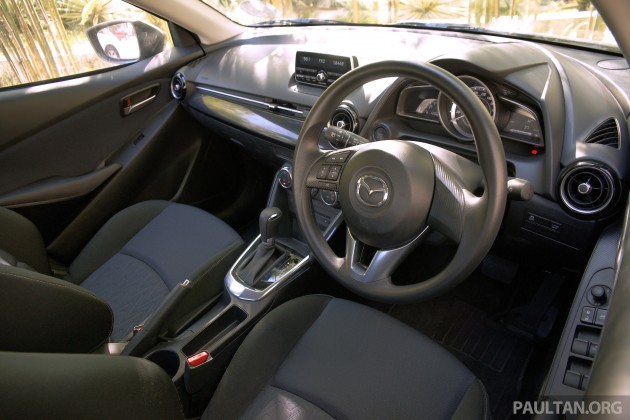









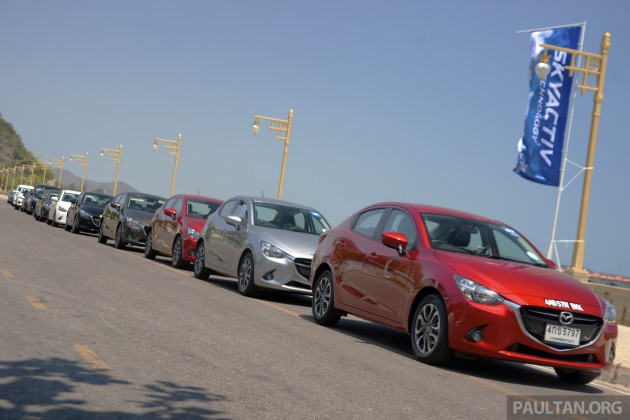





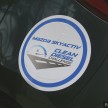
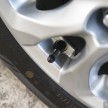
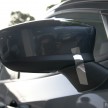
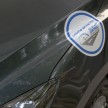
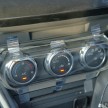
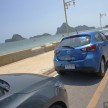
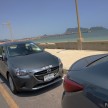
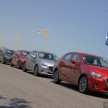
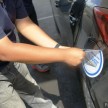
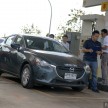
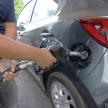
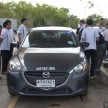
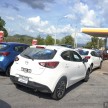
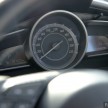
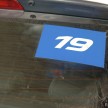
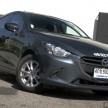
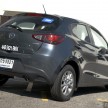
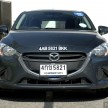
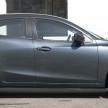
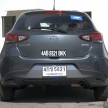
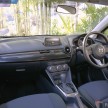
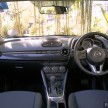
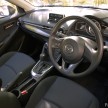
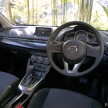
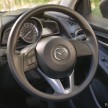
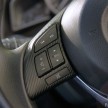
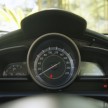
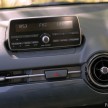
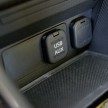
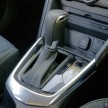
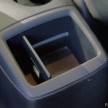

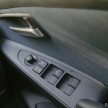
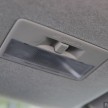

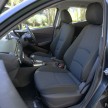
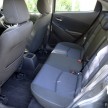
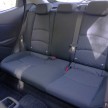
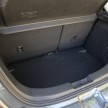
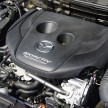
























How did those Thai teams….nvm impressive numbers from them indeed and I think they know the roads in Thailand a bit more than their Malaysian counterparts. That said I can’t wait to see more diesel models being introduced here and pls, the oil companies need to expand fast with their Euro 5 diesel being available nationwide and change those old large diameter filling nozzles to the smaller ones. I was shocked to find these old nozzles still available in places like Subang Jaya when I wanted to top up a courtesy 320d so much so I had to switch fuel brands to find the smaller nozzle pumps.
Wahai orang orang kampung, orang Eropah semua pakai diesel. Semua orang boleh dapat 1000km pakai satu tank. Paling teruk pun, dapat 800 km untuk satuk tank.
Di Malaysia, Kerajaan Malaysia don’t want Petronas to waste money giving public clean diesel the past few years. So, they encourage petrol and not diesel.
Kerajaan very happy when people in Malaysia, only 400KM, have to fill up new tank. They like to see their own people suffer with less money in their pockets every month.
Why?
Very simple. The more petrol you use, the more revenue oil companies, especially Petronas makes. This means more income tax revenue for the Government. At the same time, Petronas also makes more money to feed a few cronies ie Petronas is their Private bank.
This is why Government of Malaysia very happy when you fill your tank very often. We Malaysians fill our tanks DOUBLE compared to orang Eropah. If Orang Eropah spend RM500 per month, we spend RM1000 per month.
Kerajaan Malaysia suka.
Wahai orang masih dalam gua.
Sebenarnya orang Eropah dah nak buang diesel. Gomen perancis dah mula. Malahan dengan penipuan VW, adakah hamba masih boleh percaya lagi sama dengan orang putih ni?
no issue abt NOX emission here in msia when our fuel are still stuck at euro2 std. soo bring in the diesel, love the torque while saving more $$ on fuel bill
If they tell you that their emission is under regulations, and its a lie, what makes you so sure that their claimed fuel milage is as advertised?
Or even their safety will work as claimed?
Once they lie to you, how do you know which is true and which is not. Unlike a political manifesto, a lie on your car can put your life in danger!
My cousin own a Peugeot 508 diesel and that car has managed to clock 850+ km on a single tank with our dirty diesel.. Pretty impressive to me.. But sadly, all those cost saved from petrol consumption are being used to service the car..
Holy crap! 3km??? I could possibly only visit the pump once a month due to my extensive use of highways to get to work.
Yes, you can get good FC figures driving on highways instead of traffic jams.
But need to restraint at 80-90kph. With a fat torque and 6 speed gearbox, that is one thing hard to do. That car will be effortless doing 120kph.
1 full tank 1000km??? My 1.6L Iriz full tank only goes for around 210km driving 80% city and 20% highway. Drink fuel like drive water and engine and cabin super noisy as compared to my good friend a 2002 Toyota Vios. Really damn regret my decision!!
Are you sure ur mileage 210 km per full tank? iriz full tank 40 liter, so ur FC is around 19L/100 km. Average from fuelly website is around 9-10 L/100km.
http://www.fuelly.com/car/proton/iriz
Aralez,
He must be heavy footed driver even in traffic jam. 200 metres traffic light to traffic light also rushing high speed
U never own an iriz pon .don’t lie lah.
Yeah you should regret your decision. Why the heck did you get a 1.6L model for 80% city usage? My 1.6L Iriz can do 505km on full tank because I use 90% highway and 10% city. I use 2 highways to get to work (100km per journey). My 1.0L Kelisa definitely performs better than your 1.6L in terms of city usage lol. Do some homework on effective fuel usage next time and don’t buy cars simply because you can. You people…
Dude. You drive mostly in city ofcoz makan petrol lah! If you kena lots of traffic lights sure FC go up. If add jam, even higher. No car is different except EV.
My 8 year old Gen2 CPS 60% h/way, 40% city still gip me 420~480km per tank. Somemore if you drive like ah beng with death wish, lagi lah tinggi naik.
If you talk about sound, I will say no you are wrong. Its different sound thats for sure, but my family’s 2011 Vios is much noisier especially when accelerating.
is this some sort of marketing stunt by toyota salesman?
ah boy > probably? Haha I test drove a 2012 Vios and I intentionally speed up to 120km/h, that car already goyang like shit lol. My Iriz gave me confident even when I do 150km/h. And I’m not even Proton fan. I still love my 1.0L Kelisa in nearly every aspect, except for long distance driving.
Is the mileage independently verified or did a cheat device boost up the km when nobody’s looking?
100% highway?
waseh, so cheap. everyone gonna buy this car. then taxi people going to complaint to SPAD again cuz everyone drive a mazda2 and no one take taxi anymore.
I read thru the article but did not specifically mention how many drivers are in the car, and of course their combined body weight.
if i assume the malaysian can has an average of 80KG with 3 drivers, and the leading car is avg 65kg with 3 drivers, effectively the malaysian can is ferrying 4 thais
another variable is as others mentioned, traffic or local knowledge, as the majority of traffic jam happened in thailand, of course the thai counterparts would be better trained to “escape”.
another variable is equipment, more toys mean more weight, how much specifically? i’m not sure, but on a competition like this, every gram counts.
finally is luggage, clothes, cameras, water, snacks:
leather shoes vs sneakers, denim pants vs shorts, etc.
i’m sure there are others, but feel free to correct me or add-in.
This is a good theory, sorry in accidentally click dislike you when I actually wanted to like.
Another note worth mentioning is the use of 15 inch alloys.
Jonathan, how about engine noise frm the cabin? Is it as low as the petrol version?
Jonathan, great write-up but your sentences are a curious mix of past and present tense.
I do that red light maneuver all the time. No need to be apologetic Jonathan.
In reality it should be around 800km. This kind of competition is full of bullshit. Totally different kind of ordinary people driving habbit.